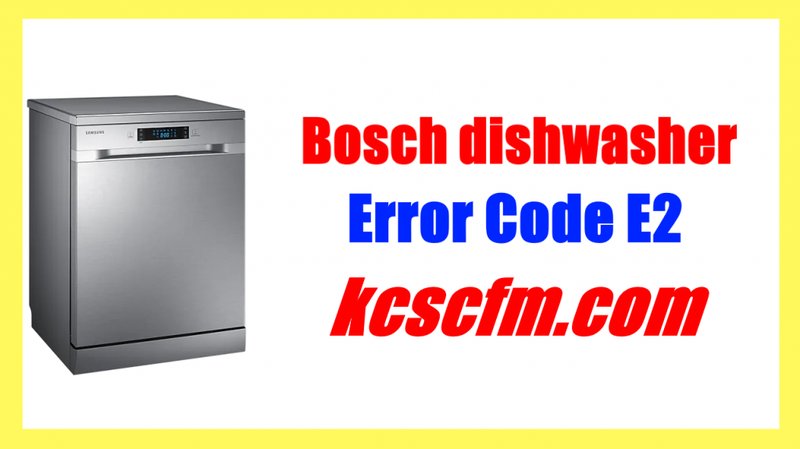
Imagine your dishwasher as a small city, efficiently moving water around to get your dishes sparkling clean. Error Code OE is like a traffic jam in that city. Water is meant to flow smoothly in and out, and when something disrupts this flow, the dishwasher can’t do its job efficiently. Hence, it sends you the OE error message. This can be a bit daunting if you’re not familiar with how a dishwasher works, but don’t worry. It’s not the end of the world, and many times, a simple reset can be your saving grace.
Understanding the OE Error Code
The “OE” stands for “Overflow,” but don’t let the term scare you. It doesn’t necessarily mean your kitchen will turn into a swimming pool. It’s more about ensuring that water doesn’t build up in the wrong places. When the error code appears, the dishwasher is alerting you that water isn’t draining correctly. It could be due to a blockage in the filter, a kinked hose, or even a faulty pump in more complex cases.
Here’s the deal: Think of the dishwasher like a bathtub. If the drain is clogged, water overflows, right? Similarly, a clog in the drainage system of your dishwasher can cause water to back up, triggering the OE error. It’s essential to check for common clogs as these are often the main culprits. Debris, like food particles, can easily get stuck in the filter or hoses, causing a blockage.
Once you’ve identified the cause, you can begin to troubleshoot. Sometimes, it’s just a matter of cleaning out trapped debris. By addressing these common culprits, you can often resolve the issue without diving into technical repairs. But, if you’re feeling stuck, there’s always the option to call in a professional.
Resetting: A Simple Solution?
So, you might be wondering, does resetting the dishwasher really fix this problem? Well, in many cases, it can! Think of resetting like giving your dishwasher a power nap. Just like refreshing a sluggish computer by restarting it, resetting your dishwasher can clear temporary glitches and faults.
To reset your Bosch dishwasher, you typically need to unplug it from the power source for a few minutes. It’s similar to taking the batteries out of a remote control when it’s acting up. Once the dishwasher is reset, plug it back in and start a new cycle. Doing this can sometimes clear the error code and help the dishwasher operate smoothly again.
However, keep in mind that resetting is more of a temporary fix. If there’s an underlying issue such as a persistent blockage or a mechanical fault, the error is likely to return. In such cases, you’ll need to roll up your sleeves or seek professional help. So while resetting is a quick first step, it’s essential to monitor your dishwasher after the reset to see if the issue reoccurs.
What If Resetting Doesn’t Work?
Now, if you’ve tried resetting and the pesky error code still rears its head, don’t panic. It might indicate more than a simple blockage or glitch. Think of it like a car engine light that won’t go off; sometimes, it points to a deeper issue that needs attention.
The next steps involve a bit of detective work. Check the drainage hose for kinks or bends that may be preventing water flow. Similar to how a bent straw makes sipping difficult, any hindrance in the hose can affect the dishwasher’s performance. Also, inspect the filter and drain pump for debris or damage.
If these checks don’t resolve the issue, it might be time to consult the dishwasher’s manual or reach out to customer support. Bosch is known for their comprehensive customer service and can often provide troubleshooting advice or professional repair services. Sometimes, the expertise of a technician is needed to diagnose and fix more complex problems like faulty valves or sensors.
Preventative Measures and Final Thoughts
As the saying goes, an ounce of prevention is worth a pound of cure. To minimize the chances of encountering the OE error again, make regular maintenance a habit. Regularly clean the dishwasher’s filter and ensure that no large food particles are left on dishes before loading them. It’s like brushing your teeth — a small regular effort can prevent bigger problems down the road.
In conclusion, resetting your Bosch dishwasher when faced with an OE error can often provide a quick fix, but it’s crucial to keep an eye out for recurring issues. With proper maintenance and prompt attention to any malfunctions, you’ll likely keep your dishwasher running smoothly for years. Remember, a little understanding and care can go a long way in extending the life of your appliance.